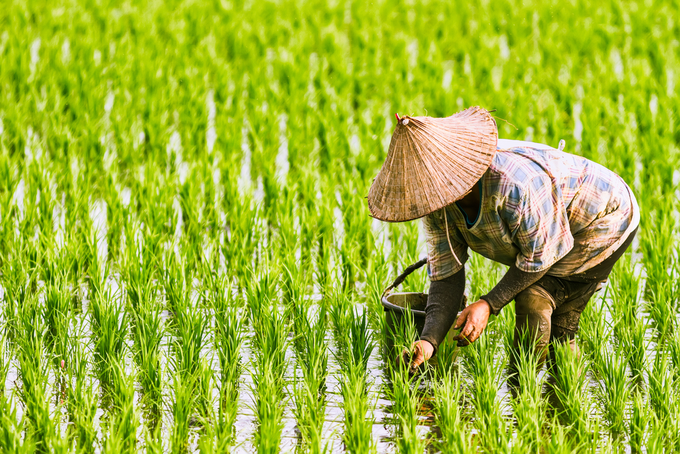
After India banned rice exports, prices of the grain have shot up but are unlikely to top the US$1,000 per ton levels reached in 2008 in the current scenario.
India prohibited the export of non-Basmati rice varieties in late July, driving up global prices.
The export prices of Vietnam’s 5% broken rice jumped by $25 per ton.
In some Vietnamese rice-growing areas, traders have been scrambling to buy the grain to fulfill contracts they have signed, pushing up prices steadily.
Do Ha Nam, vice president of the Vietnam Food Association, said export prices climbed to $700 per ton on August 10, the highest since 2008.
On August 17, following reports that India would soon lift the ban, the prices began to edge down again.
In Vietnam, retail prices jumped by VND3,000-5,000 per kilogram in August to VND18,000-20,000 ($0.76-0.84).
For many people, the developments are redolent of 2008.
Vo Tong Xuan, a scientist who created many award-winning rice varieties, said in 2008 export prices reached 100-year highs of more than $1,000 a ton.
The world faced a food shortage that year.
The weather was unfavorable, oil prices were high, food reserves were low, and demand was rising in countries such as China and India.
Xuan said the Vietnamese government at that time ordered exporters not to sign new contracts and capped exports for the year at 4.5 million tons.
But, worried about the rising prices and low supply, people rushed to buy and hoard rice, but traders refused to sell, waiting for prices to climb further.
In the event, prices skyrocketed from VND12,000 to VND20,000 per kilogram.
Xuan said that scenario is unlikely to reoccur even though both times India, which accounts for 40% of the world’s supply, banned rice exports.
In 2008, global rice reserves fell and demand exceeded supply, he said.
According to the United Nations Food and Agriculture Organization, Asia’s rice stocks at that time were low, falling from 140 million tons to 60 million tons in 2007 before recovering to 105 million tons a year later.
At least 37 countries faced a food crisis as prices suddenly increased from $550 to $1,000.
Xuan said this year global rice stocks have decreased but not significantly.
India banned exports on July 20, but the latest reports from that country show that rainfall has increased again since the beginning of August and is conducive for sowing the summer-autumn crop.
Data from the Indian Ministry of Agriculture shows that, as of August 4, 28.3 million hectares had been sown, 3.4% more than a year ago.
India has 24.6 million tons of rice and 13 million tons of paddy in reserve, three times target set by the government.
India is therefore expected to lift the ban soon, and this would quickly bring rice prices down.
Nam said the world market would adjust soon. In 2008 global stocks had been the lowest in 30 years, but now they are only marginally lower than last year, he said.
Global production is forecast to increase by 2% to 520 million tons.
Thailand and Vietnam, the world’s second and third largest exporters, are encouraging exports.
“Supply from these two countries is abundant,” Nam said.
In Vietnam, the area under autumn-winter rice in the Mekong Delta, Vietnam’s rice basket region, has been increased from 650,000 hectares to 700,000 ha.
Thailand and China, having learned lessons from 2008, are well prepared this time.
China, the world’s largest rice consumer, has recovered more than 170,000 hectares of land since 2021 for farming to move toward self-sufficiency in feeding 1.4 billion people.
Last year, President Xi Jinping called for ensuring there are 120 million hectares of arable land across the country, a number his government considers sufficient to ensure domestic supply.
China has urged farmers to reduce cultivation of fruits and increase production of food crops, including paddy.
Analysts expect global rice prices to increase this year, but only to around $600-800 per ton.
“It is very difficult to reach the $1,000 mark like in 2008,” Xuan said.
According to Bui Chi Buu, former director of the Institute of Agricultural Science for Southern Vietnam, businesses should take advantage of the opportunity to export the grain and not hoard it.
“If they hoard in and speculate, businesses are at risk of making losses when India lifts the ban. Rice inventories will surge while the shelf life of rice is only three to six months.”
Experts said since domestic prices are now higher than global prices, farmers, traders and exporters need to be cautious.
Minister of Industry and Trade Nguyen Hong Dien recently instructed relevant authorities to inspect businesses and warehouses to monitor supply of rice and prevent speculation and hoarding to keep prices in check.
This year Vietnam has some 7.1 million hectares under the grain and expects to grow 43 million tons of paddy, equivalent to 27-28 million tons of rice.
The country exported nearly 4.9 million tons of rice worth more than $2.6 billion in the first seven months of the year, a year-on-year increase of 31% in value.

